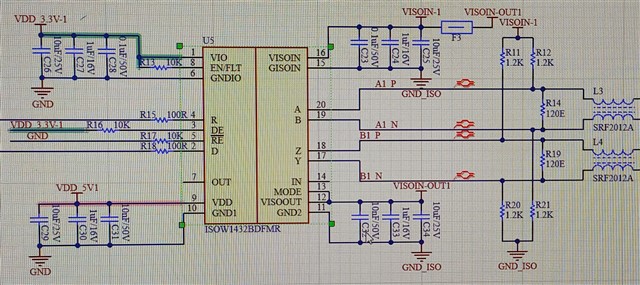Tool/software:
Hi,
I am using ISOW1432 RS422 Transceiver, Attached the circuit diagram of it.
When i am trying to power it up, Transceiver and Termination resistor 120E at Y,Z line is getting hot.
This is because of default line state (Y - High & Z - LOW) as per the input configuration set (DE - High & RE - LOW) (D - Float & R - Float)
I just want to clear, Is it the right way to be in standby mode or we have to control the DE pin to make it LOW when in standby mode
So that Y,Z will be in high impedance and there will be no un-necessary current flowing through the termination resistor.
Thanks



